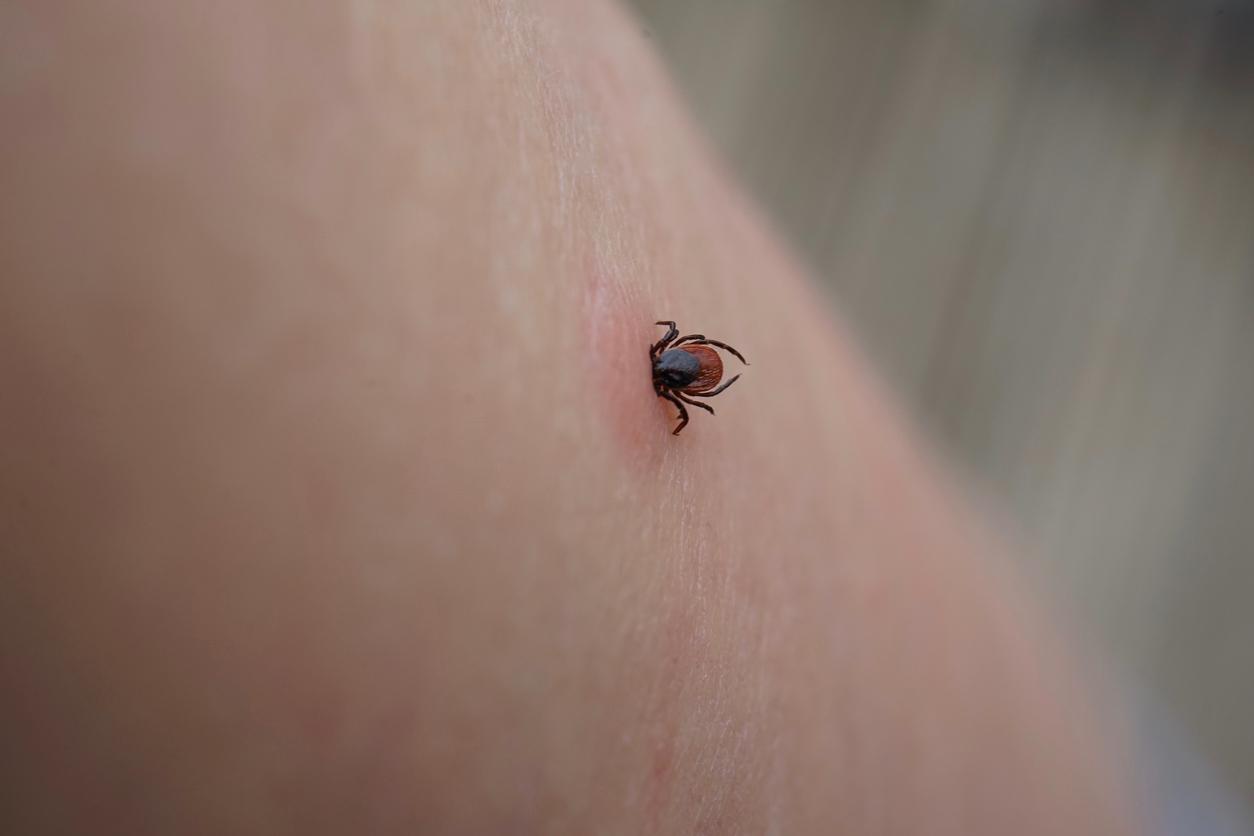A team of researchers discovered that human sweat contained a protein capable of protecting against this tick-borne disease.

- In the study, scientists identified two immune molecules previously associated with Lyme disease.
- Additionally, they discovered a protein produced by sweat gland cells called “secretoglobin (SCGB1D2).”
- The latter may provide some protection against Lyme disease, which is transmitted by ticks infected with the bacteria Borrelia burgdorferi.
In France, around 50,000 cases of Lyme disease are diagnosed in general practice and 800 hospitalizations are recorded per year. As a reminder, this pathology is transmitted during a bite from ticks infected with the bacteria Borrelia burgdorferi. “While most affected individuals respond to standard antibiotics, others develop a serious infection that requires stronger antibiotic treatment and can lead to chronic disease. (…) Host factors that modulate susceptibility to TB disease Lyme remain mostly unknown”, indicated scientists from the universities of Tartu (Estonia), Helsinki (Finland and the Massachusetts Institute of Technology (United States). This is why they carried out a study published in the journal Nature Communications.
A protein produced by sweat gland cells has been linked to Lyme disease
As part of this work, the researchers used a Finnish dataset containing the genomic sequences of 410,000 people as well as detailed information on their medical histories. Of these, approximately 7,000 adults have been diagnosed with Lyme disease. This allowed the team to look for genetic variants more frequently found in people who had the condition than in those who had not. The team discovered two immune molecules previously associated with Lyme disease. However, the identification of secretoglobin, called SCGB1D2, came as a surprise. This protein is produced mainly by the cells of the sweat glands, which secrete sweat.
Mice exposed to the normal version of the protein ‘were never infected’
To find out how this protein might influence Lyme disease, the authors created normal and mutated versions of SCGB1D2 and exposed them to the laboratory-grown bacterium Borrelia burgdorferi. They observed that the normal version of the protein significantly inhibited the growth of Borrelia burgdorferi. However, when they exposed the bacteria to the mutated version, twice as much protein was required to reduce bacterial growth.
In one experiment, mice injected with bacteria exposed to the mutant protein became infected with Lyme disease, but rodents injected with bacteria exposed to the normal version did not. SCGB1D2. “We show that they remained healthy until day 10, but we also followed the mice for over a month and they never became infected. It wasn’t a delay, it was a complete stop”, clarified Michal Caspi Talco-author of the research.

A shift from the amino acid proline to leucine
Currently, scientists do not yet know exactly how SCGB1D2 inhibits bacterial growth, or why the mutated version is less effective. Nonetheless, they found that the mutation causes a shift from the amino acid proline to leucine, which may interfere with the formation of a helix found in the normal version. Now the team plans to study whether applying the protein to the skin of mice, which do not naturally produce SCGB1D2, could prevent them from becoming infected with Borrelia burgdorferi. She also plans to explore the protein’s potential as a treatment for infections that don’t respond to antibiotics.















